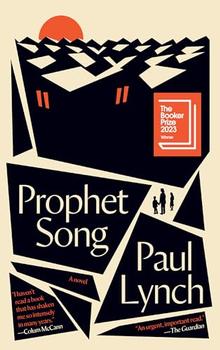Book Club Discussion Questions
In a book club? Subscribe to our Book Club Newsletter!
Please be aware that this discussion guide will contain spoilers!
This reading group guide for Carpentaria
by Alexis Wright includes an introduction, discussion questions, and ideas for enhancing your book club. The suggested questions are intended to help your reading group find new and interesting angles and topics for your discussion. We hope that these ideas will enrich your conversation and increase your enjoyment of the book.
Introduction
In the sparsely populated northern Queensland town of Desperance, loyalties run deep and battle lines have been drawn—between the powerful Phantom family, leaders of the Westend Pricklebush people, and Joseph Midnight's renegade Eastsend mob—and their disputes with the white citizens of the neighboring towns. When the Gurfurrit mine moves in, making uneasy alliances to support its ownership of the region's land and rich mineral resources, it aggravates an already complex relationship between Uptown whitefolk and Pricklebush Aboriginals. Trapped between politics and principle, past and present, the indigenous tribes fight to protect their natural resources, sacred sites, and above all, their people. From outcast savior Elias Smith, religious zealot Mozzie Fishman, murderous mayor Bruiser, queen-like Angel Day, to activist Will Phantom and ruler of the family, Normal Phantom, the characters of
Carpenteria transcend their circumstances and challenge assumptions about the downtrodden "other."
Questions for Discussion
- Some critics have praised Wright for her use of magical realism in Carpentaria, while others suggest it is more realistic than not. What aspects of the novel would you say are elements of magical realism, and what are elements of realism? How did this technique affect your reading of the novel?
- Examine the significance of names in this novel, such as those of the Aboriginal characters Angel Day, Normal Phantom, Joseph Midnight, and Mozzie Fishman. Do the "whitefella" names carry as much meaning? Why or why not?
- The opening of the novel describes an ancient serpent winding its way across Australia to create its rivers and tunnels, particularly in the mudflats of the Gulf of Carpentaria. The inside knowledge of this coastal region and the underground river that is also the snake, our narrator tells us, is Aboriginal Law. Using examples from the novel, discuss how a worldview like this influences the characters' daily lives.
- Uptown's "whitefella mob" was "full of people claiming to have no origins." (p. 57) They seem to be descended from people who just appeared, washed up by the sea. The Pricklebush people have similarly ambiguous origins—they ultimately split into groups arguing over who owns what pieces of traditional land, while simultaneously struggling to live a half-life between Aboriginal Law and "whitefella" custom. Discuss the ways in which the people of Desperance derive a sense of identity in light of, or despite, their somewhat unknown past.
- There is great irony in the poverty of Desperance, a town full of greedy people sitting on top of an underground fortune in minerals. How does the Gurfurrit mining company use their situation to its own advantage? Identify the ways in which the mine exerts its influence on the people of Desperance and analyze why their tactics succeed or fail.
- If Mozzie Fishman's convoy brings messages of hope, why do both Uptown and Pricklebush people hate it? Compare and contrast Mozzie to the leaders of the other two "mobs" in this story: Norm Phantom of the Westside, and Joseph Midnight of the Eastside. Whose heir is Will Phantom really?
- On page 266, Norm Phantom pauses in a prayer to reflect on the meaning of the word, "trespass." What does this word mean to the different people and groups in this novel? How do issues of ownership affect their relationship with both the land and sea that surrounds them?
- A host of colorful characters populates the pages of Carpentaria. Do you think this story has a hero? Make a case for your choice, or explain why you believe the novel does not have a hero in the traditional sense.
- On page 378, Joseph Midnight tells Will that Norm had thrown stones at his own grandson, Bala. However, as Will explains, there are no stones available in the claypan to throw. What does this moment tell you about the novel's stories? Who is the narrator for the novel itself, and is s/he a reliable narrator? Why or why not? Are there any reliable narrators in the novel?
- Compare and contrast the migrations of Mozzie Fishman's convoy following the underground serpent river from end to end across Australia with the people of Desperance vacating the town at the end of the novel. What do you think the cyclone symbolizes? How does the landscape of the novel reflect the themes Alexis Wright is tackling?
- Most of the main characters in this novel are male, except for Angel Day, who blows through the lives of the Pricklebush mob like a cyclone. What makes her a Queen instead of an ordinary woman? Why does Norm Phantom have such disdain for his three daughters, who are his only children to remain home and relatively trouble-free? Do you feel any sympathy for these women? Discuss the role of the female in this novel.
- Carpentaria is a lyrical novel full of interwoven histories and myths. What do you think this story is ultimately about? Mozzie tells his men on page 426, "Nothing must stop our stories, understand?" What does he mean by this? How is the novel itself a response to this edict?
- Discuss the conclusion of the novel. What is the significance that three people—Norm, Hope, and Bala—are the only ones left in Desperance? What do you think envision might happen after the final pages? Why doesn't the author show Hope rescuing Will and bringing him home?
Enhance Your Book Club
- Carpentaria tells many stories in a circular, rather than linear, manner. Make a timeline of the events of the novel to get a linear understanding of how the action unfolds and share it with your book club. Note any points of ambiguity and discuss whether the author did this intentionally or not.
- The history of Australia's development is marred by strife between white settlers and industry and the native Aboriginal people. Do a little research into Australia's history to get a better perspective on the events in the novel. You can start by browsing Alexis Wright's nonfiction book, Take Power, an anthology on the history of the land rights movement, or by reading this essay she wrote: www.australianhumanitiesreview.org/archive/Issue-September-1998/wright.html.
- The story of Desperance is primarily told through the perspectives and individual stories of male characters. Imagine how it might have been told via the perspective of the region's female inhabitants, such as Angel Day and the Phantom sisters. As a fun exercise, take one chapter or scene from the novel and rewrite it from the perspective of an existing female character, or, if you are feeling particularly creative, invent a new female character that is not currently developed in the novel.
Unless otherwise stated, this discussion guide is reprinted with the permission of Atria Books.
Any page references refer to a USA edition of the book, usually the trade paperback version, and may vary in other editions.




